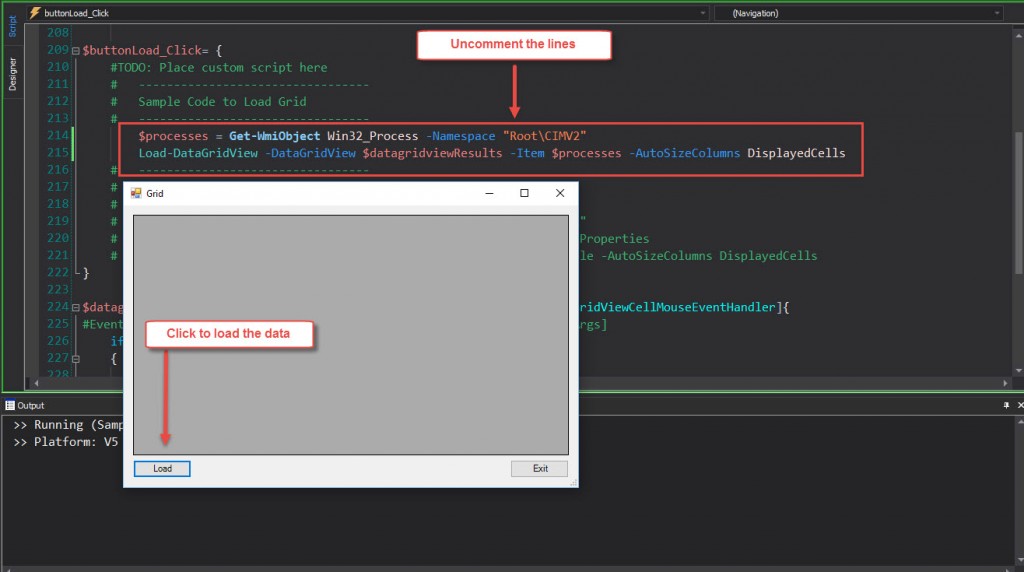

- Sapien powershell studio activation server addresses code#
- Sapien powershell studio activation server addresses windows 7#
A handy ChangeLog feature helps you document script modifications. By default, the editor showed line numbers, which can be useful for troubleshooting PowerShell scripts.
Sapien powershell studio activation server addresses code#
It offers a full-featured editor with unlimited undo and redo, color-coded syntax, and IntelliSense-style code completion.

The icons in the toolbar weren't standard and I didn't really like their look, but they were easy to get used to.Įditing single scripts was easy-ASE provides virtually all of the basic script editing capabilities that you would want. ASE features a multi-tabbed editor interface, as Figure 1 shows. After the installation completes, you have the option to launch it. Installing ASE was quick and easy, taking less than a minute.
Sapien powershell studio activation server addresses windows 7#
Windows 7 and Server 2008 R2 will be supported in ASE's next release.

However, ASE 3.6 doesn't support Windows 7 (which was troublesome for testing, because Windows 7 is my primary desktop) or Windows Server 2008 R2. NET Framework 3.51, and user-definable color schemes.ĪSE runs on Windows 2000 and later and requires the. ASE includes support for PowerShell debugging, 75 new Logon Script Builder templates, support for the Microsoft. cmd), XML, XML Schema Definition (XSD), and Extensible Style Language (XSL). Besides PowerShell and VBScript, it supports Active Server Pages (ASP), AutoIt, KiXtart, HTML, HTML Application (HTA), Windows command shell (.bat and. In the past, I've used this set of scripts for product benchmarking and for testing several standalone PowerShell utilities.ĪSE began as a VBScript editor and has been enhanced to support PowerShell. To see how ASE and PrimalScript 2009 stood up to these criteria, I used them to edit and debug a multi-file set of PowerShell scripts. Last but certainly not least, a good development environment should let you debug scripts by setting breakpoints, single stepping through code, and viewing and modifying the contents of variables. Being able to perform block mode editing is another handy feature. Equally important is the ability to organize your files into projects and have multiple files open in different windows. In addition to support for multiple scripting languages, you'll want to look at whether the editor provides templates for common coding constructs (e.g., For Next loops and common object creation) and code editing tools (e.g., color-coded keywords).Īnother important factor is support for code completion along the lines of Visual Studio's IntelliSense, where the editor can interactively display a drop-down box showing an object's methods and properties. They should support unlimited undo and redo, as well as provide intelligent help with a variety of scripting languages. Modern editors should meet several criteria.

Table 1: Comparison of the Editors' Features (click to enlarge) For more information about some of the other choices for developing PowerShell scripts, see the sidebar " Other PowerShell Development Tools." Table 1 compares these products' features. In this review, I'll look at two of the leading PowerShell editors: iTripoli's Admin Script Editor (ASE) 3.6 and SAPIEN Technologies' PrimalScript 2009. A lot has changed over the past year, and the current crop of PowerShell editors provides full-featured PowerShell development environments. For instance, not very long ago PowerShell scripting editors really only delivered color-coded syntax-they lacked other vital capabilities such as statement completion and debugging capabilities. Even so, in the past, the capabilities found in development tools for PowerShell have lagged behind those found in development tools for other scripting languages. Microsoft has adopted PowerShell as the scripting environment for a number of its products, including System Center Virtual Machine Manager (VMM) 2008, Windows Server 2008 R2, Exchange Server 2007, and the upcoming Exchange Server 2010 release. There's no doubt that Windows PowerShell is the future for Windows administrative scripting.


 0 kommentar(er)
0 kommentar(er)
